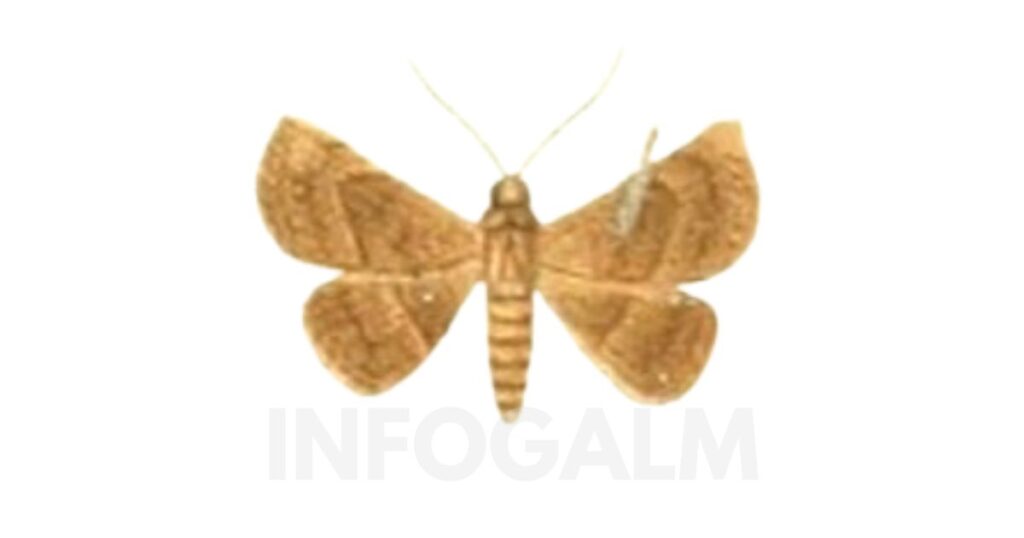Introduction
Moths, frequently eclipsed by their more brilliant family members, butterflies, are among Earth’s most assorted and broad gatherings of living beings. Inside this gathering, the variety Autoba, part of the enormous Erebidae family, stands apart for its fascinating attributes and tricky nature. First depicted by Francis Walker in 1863, the Autoba variety dazzles entomologists and nature enthusiasts. In this article, we’ll plunge deeply into the secrets of Autoba moths, highlighting the outstanding species Autoba costimacula and investigating what makes these nocturnal creatures so fascinating.
Understanding the Genus Autoba
The genus Autoba is a lesser-known group within the Erebidae family, which encompasses over 35,000 species. Despite the vast diversity in this family, it moths hold a unique charm. They are known for their subtle beauty and fantastic capacity to mix with their surroundings, making them experts in camouflage in the natural world.
The Taxonomy of Autoba
Autoba belongs to the Erebidae family and is renowned for its size, form, and lifestyle variety. This family includes some of the most spectacular moths on Earth. The Autoba genus is recognized for its distinctive characteristics within this diverse family. Notable species within this genus include Autoba costimacula, Autoba olivacea, and Autoba albifascia, each contributing to the genus’s enigmatic allure.
Physical Characteristics
It moths generally display a range of subtle earth tones that aid in camouflage. Their intricate wing patterns can surprisingly reflect ambient light, creating a stunning play of colours that helps them blend seamlessly with their natural surroundings. When at rest with wings spread, Autoba moths can appear almost invisible against tree bark or leaves, a crucial adaptation for avoiding predators.
Spotlight on Autoba costimacula
Autoba costimacula is a prime example of the genus’s beauty. This species showcases an extraordinary ability to merge with the bark of trees and other natural backgrounds. Such cryptic colouration is vital for their survival, protecting them during their vulnerable resting periods. The wings of Autoba costimacula feature subtle shades and intricate patterns that mimic the textures and colours of their environment, making them almost undetectable to predators.
Lifecycle and Behavior
Like other moths in the Erebidae family, there moths go through complete metamorphosis. They start life as eggs before becoming caterpillars, pupae, and grown-up moths. Each phase of their lifecycle is adjusted to boost survival, often utilizing mimicry and stealth.
Egg Stage
The lifecycle begins with the egg stage. Female Autoba moths lay their eggs on appropriate host plants, guaranteeing that the rising caterpillars have prompt admittance to food. The eggs are often laid in groups, and their colouration and position assist them with mixing into the environmental elements, decreasing the probability of predation.
Caterpillar Stage
Once hatched, the caterpillars of Autoba moths exhibit remarkable survival adaptations. They frequently look like twigs or leaves, providing phenomenal cover against predators. These caterpillars are voracious feeders, consuming leaves and growing rapidly. Their cryptic appearance and behaviour help them avoid detection during this vulnerable stage.
Pupal Stage
After the caterpillar stage, Autoba moths enter the pupal stage, a transformative phase during which they undergo significant changes. The caterpillar forms a pupa during this period, often hidden within leaves or buried in the ground. The pupa is well-camouflaged, offering protection from predators and environmental conditions as the moth develops.
Adult Stage
In the final stage, the adult moth emerges from the pupa, ready to mate and continue the lifecycle. Adult Autoba moths are primarily nocturnal, using the cover of darkness to evade predators. Their muted colours and patterns help them remain inconspicuous during the day when they are at rest. Mating and reproduction are critical activities for adult moths, ensuring the continuation of the species.
Habitat and Distribution
It moths are found in various habitats, showcasing their adaptability to different environmental conditions. They flourish in forests, grasslands, and even urban areas, as well as anywhere their host plants are accessible. Their distribution traverses a few continents, reflecting their capacity to adjust and survive in different climates and regions.
The Significance of Studying Moths
Studying moths and remembering those for the Autoba variety is far from a speciality pursuit. These bugs act as marks of ecological well-being, responding delicately to changes in their natural surroundings and levels of contamination. By concentrating on them, researchers gain important experience in the effects of human activities on ecosystems. Moths likewise assume critical parts as pollinators and as a feature of the food web, supporting various species.
Conservation Challenges
Despite their adaptability, its species face significant habitat loss, light pollution, and climate change threats. The destruction of natural habitats due to urbanization and farming decreases the accessibility of host plants, which is fundamental for survival. Light pollution disturbs their nocturnal behaviours, diminishing mating achievement and expanding predation. Environmental change worsens these difficulties by modifying their living spaces and food sources.
Impact of Habitat Loss
Habitat destruction is a primary threat to Autoba moths. Deforestation, land change for agriculture, and urban expansion deplete significant living spaces. These progressions can prompt decreases in moth populations and disturb the delicate balance of ecosystems where they assume fundamental roles.
Role of Light Pollution
Artificial lighting at night significantly impacts moth behaviour. Light pollution can disorient moths, leading them away from natural habitats and increasing their vulnerability to predators. It also interferes with their mating rituals, often timed with the moon’s phases. Reducing light pollution is essential to mitigate its negative effects on moth populations.
Conclusion
The class Autoba offers a fascinating glimpse into the perplexing world of moths. Understanding and valuing these creatures extends our association with the natural world. It costimacula and its relatives may not seek the spotlight, but their roles in biodiversity are profound. Next time you see the nightfall shadows gleaming, take a minute to think about the quiet beauty of these nocturnal wonders. Autoba moths attest to Earth’s intricate tapestry, demonstrating that even the littlest creatures hold tremendous significance.
FAQs
- Why are moths important to ecosystems?
Moths play crucial roles as pollinators and food sources for different creatures. They likewise assist with pollinating plants and act as signs of environmental health.
- What unique adaptations do Autoba moths have?
It moths have exceptional camouflage abilities, allowing them to blend seamlessly into their surroundings and avoid predators. Their wing patterns and colours are key adaptations for survival.
- How can we help conserve Autoba moths?
Conservation efforts include preserving natural habitats, reducing light pollution, and supporting ecological research. Planting native flora and creating moth-friendly environments also help.
- Where can Autoba moths be found?
It moths are distributed globally and can be found in various habitats, including forests, grasslands, and urban areas. They adapt to environments where their host plants are present.
- What makes Autoba costimacula unique?
It costimacula is known for its remarkable ability to camouflage against tree bark and other natural backgrounds. This cryptic colouration is essential for avoiding predators and surviving in the wild.







